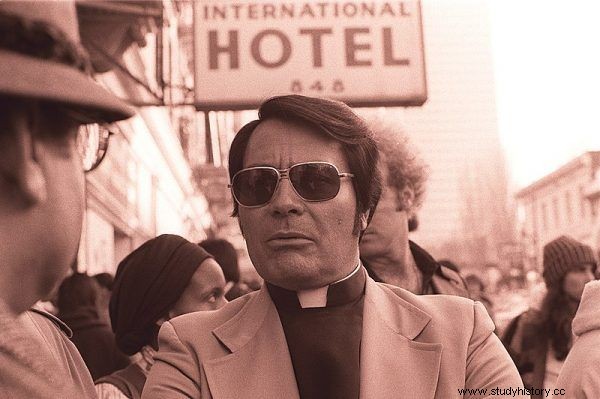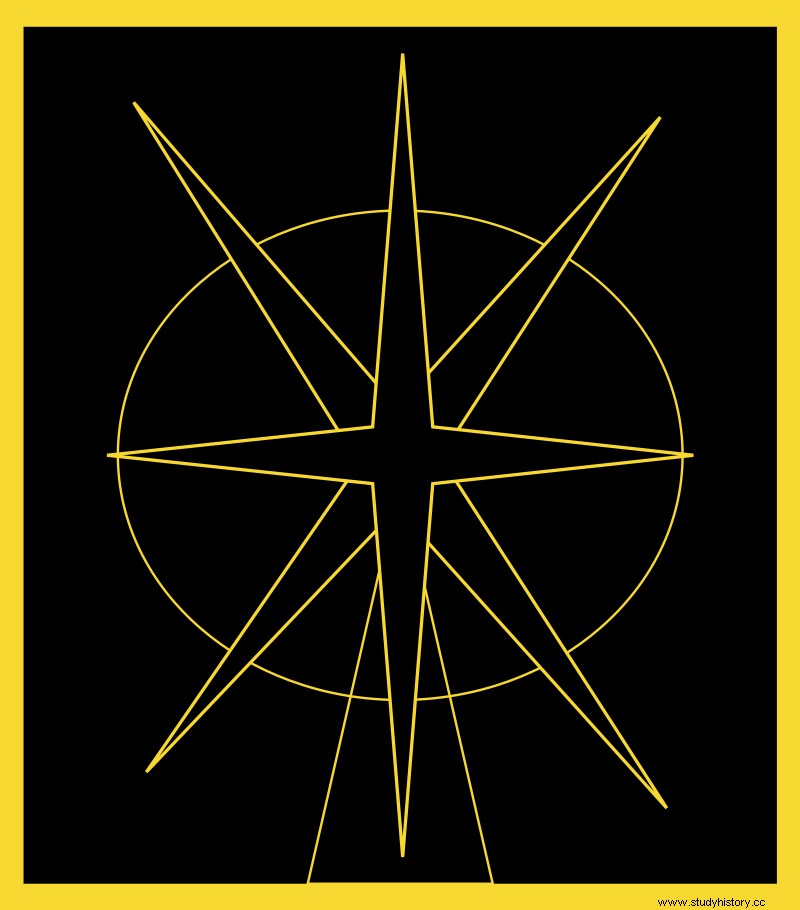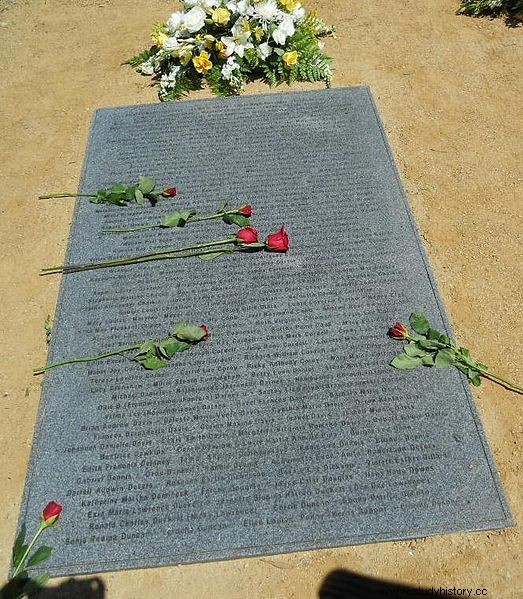“They say the greatest orgasm is death, so I hope we'll have a great pleasure to die together,” wrote one of Jim Jones's followers. Soon her dream came true. More than 900 members of the Temple of the People sect committed suicide at the behest of their guru. But are you sure they took their own lives of their own accord?
At first glance, living in the Jonestown colony of Guyana seemed like an idyllic life. Prosperity reigned in the town, the needs of all residents were met in a socialist fashion. The smiling settlers spread all over the place about their happiness and sense of fulfillment. It is a communist utopia that many previously dreamed of ...
The truth of what was actually happening there was, however, much darker. Established in the mid-1970s, the town became a silent witness of dramatic events. And that long before 909 members of the Temple of the People committed mass suicide in Jonestown ...
Socialist (anti) utopia
The history of the infamous grouping dates back to the 1950s. At the time, only 25-year-old Jim Jones, a candidate Methodist priest, dissatisfied with the prevailing racial divisions and discrimination in the church, decided to start his own organization. The People's Temple was officially established in 1956. As her "father" called "Reverend Jones" used to say:"I believe we are the purest communists in existence."
Jones's Church quickly gained popularity - largely due to the charm of its founder. As he describes in What Happened in Jonestown? The Jim Jones sect and the greatest mass suicide Jeff Guinn:
He had an extraordinary gift:when he met someone, he was able to immediately deduce what was important to that person and convince them that he shared their interests.
At its peak, the sect numbered about 30,000 members and fortune was estimated at over $ 15 million. She was not the first better bunch of fanatics centered around a religious guru. The leader of the Temple was universally respected, and beautiful socialist values of economic, racial, and social equality prevailed in the community. Or at least that's what it looked like from the outside.
Over time, information on how the members of the sect were actually treated gradually began to leak to the light - there were talk of numerous prohibitions (including drinking alcohol), forcing and exploiting the faithful, intimidating former members, as well as financial crimes committed by the "Reverend". Critical articles were published in the press, which revolved around the question:"Why should an investigation into Jim Jones be launched?".

At its peak, the sect numbered around 30,000 members, with an estimated fortune of over $ 15 million
The founder of the sect immediately saw it as a persecution - and along with a group of followers ... he escaped. In 1974, members of the sect settled in Guyana. In the middle of the jungle, in a land that he had bought for a song and cut off from the world, Jones founded a city he named Jonestown in his honor. It was supposed to be a utopian socialist colony, but its leader quickly began to implement the same principles for which he had previously been criticized.
Debauchery not for everyone
Jonestown residents had more than just alcohol restrictions. As reported by Jeff Guinn in the book What Happened in Jonestown? :
As pastor of the People's Temple, Jones wanted to know all aspects of the followers' sex lives and told them who should sleep with whom. He was just one step away from banning the faithful from having sex entirely .
Naturally, these restrictions did not apply to him. The guru of the sect enjoyed his privileges freely - and in case he did so, he relied on his authority as "Reverend". Jeff Guinn describes:
He was so convinced of his own sexual attractiveness that he believed that all women, no matter what their age and what they might say, were attracted to him. (...) He began to make occasional sexual contacts, resulting more from whims than even short-term infatuation. Consciously or not, Jones was limited to young women who were personally devoted to him or so insecure that they felt overwhelmed and subservient.
He did not accept the refusal. If some of his "girlfriend" resisted, he simply raped her in the world. Such was the fate of, among others Debbie Layton, whom the cult guru forced to have sex, explaining that he was doing it "to help her", and 19-year-old Shanda James (drugged her, then took her half-conscious to a hut, where, as described by one of his fellow believers, Tim Tupper:"Fucked her when he wanted to").
In his debauchery he also resorted to homosexual intercourse and even pedophile acts! He indulged in his other "whims" - he paid himself several thousand dollars from the Temple coffers for private expenses and ingested more and more painkillers, as well as tranquilizers and stimulants. He eventually became addicted to them (his amphetamines abuse led him to a paranoia that sealed the sect's tragic fate).
Death for $ 8
With the fall of "Reverend Jones", there was a deterioration of the entire People's Temple. The members of the group began to rebel against the total control of the guru who looked into their panties and plates and constantly attacked their imaginary enemies.
At the same time, the sect's financial situation - which the rank and file did not know - worsened day by day. Jonestown had a monthly deficit of at least $ 100,000. Admittedly, the founder of the settlement had "savings" estimated at over $ 30 million , but he realized that even this money would not be enough to cover the losses long enough that he would not have to worry about the future.

Logo of the Temple of the People
Insiders (with Jones at the fore) had even made plans to set up a network of nightclubs in Guyana, but it was estimated that this and several other lucrative interests would not generate enough income. Moreover, there was also an ideological question. After all, the Temple of the People was a socialist group, while its existence or not would be decided by capitalism? The only thing that could be counted on was… support from the USSR (the guru persuaded the faithful that he would transfer the entire colony to Russia). This, however - though it is unlikely to surprise anyone - never came.
Another problem emerged - refugees from Guyana, as well as family members of believers and activists associated with the group "Concerned Relatives" began to publicize the truth about the disturbing events in Jonestown. The media got information about the lies of the guru, the terror prevailing in the settlement (the faithful were not allowed to leave the colony or contact their loved ones; the disobedient were punished with public humiliation, flogging or electric shocks) and the slave work that the "Reverend" forced his "sheep" to do.
Jones's drug addiction -induced paranoia also intensified over time who believed that the US authorities wanted to enslave children from the settlement and murder the elderly. Eventually, it would lead to a tragedy. Jeff Guinn in What Happened in Jonestown? refers:
With all of the current events, Jones felt it was time to look at the most convenient ways to accomplish an act he had been alluding to for a long time. (…) Phyllis Chaikin suggested that everyone should be shot, Jones preferred poison. (...) On Jones' orders, Larry Schacht ordered a pound of sodium cyanide, sufficient for 1,800 lethal doses. The purchase was $ 885 cents.
Jones himself explained his killing plans:"In my opinion, we must take care of the children and take care of our elders, give them the elixir, as they did in ancient Greece, help them go away peacefully, because we do not commit suicide. It's a revolutionary act. ”
This revolution happened on November 18, 1978.
White Night
The immediate cause of the dramatic events that took place in Guyana at that time was the visit of Congressman Leo Ryan. The politician, initially charmed by the colony, was brutally brought down to earth by a group of members of the group who pleaded with him for help. He demanded that Jones release the volunteers and let them return to the United States. It did, but just before the plane took off with the rebels and Ryan on board, the sect's militants opened fire on the machine. Five people (including a congressman) were killed, several more injured.
Terrified of the possible consequences of the murder of the politician, Jones decided to implement the murderous plan. We know about the details of this tragic evening, called "white night", from the accounts of a handful of surviving witnesses - and from the film that records the shooting at the airport and the last minutes of the members of the sect. In the book What Happened in Jonestown? Jeff Giun describes:
Jones wanted babies to go first, then smaller and older children. "It's simple, it's simple," he reassured his parents. (…) No one was left with a choice. Jones told the men with guns to let parents who want to die with their children get in line with them (...).
When the nurses injected the poison into the mouths of their youngest children, many of the parents standing next to the children began to hesitate, especially when the little ones started choking on foam and shaking in convulsions.
Contrary to the sect's guru's predictions, death from cyanide was not painless. This poison causes a slow suffocation, depriving the cells of the ability to absorb oxygen. Convulsions and bloody vomiting appear in the last minutes. The victim is desperately trying to take a breath. He finally collapses and dies.
Greatest suicide or mass murder?
Meanwhile, Jim McElvane, who replaced Jones with a microphone on stage so that he could watch the agony of the followers in peace, exhorted:"It's good ... You've never felt so good before." Maria Katsaris, on the other hand, reassured parents concerned about the wailing of dying toddlers with the words: “This is not a cry of pain. Only this potion is a bit bitter. ”

1 of 3 new tombstones placed during the 2011 Jonestown memorial service at Evergreen Cemetery in Oakland, California. The names of all the dead are written on the stones
Not all, however, meekly accepted the poison - the reluctant ones had it injected by force. It is not known how many of the faithful were thus "induced" to participate in mass suicide. According to estimates, it was between 20 and even a third of those killed in Jonestown. And yet there were 909 bodies in total (including about 300 children) … So there are many indications that the greatest mass suicide in history was in fact mass murder!
Interestingly, Jones himself did not die from cyanide, but from a shot in the head. Did he chicken out of the suffering of his "lambs"? Or maybe one of the survivors helped him to part with the world? We will probably never know that.
Despite the tragedy and the ongoing FBI investigation, the People's Temple itself survived for over a year. A handful of followers held on until all of the sect's property - from land to printing machines - was confiscated and put up for auction (the money was used to cover the costs of investigation and identification of the bodies, as well as compensation for the relatives of the victims and former members of the group).
The last mass, with only 30 people attending, was held on December 3, 1979 . Three days later, the faithful submitted a request for the formal dissolution of the organization. In this way, the church of Jim Jones shared the fate of its founder…
